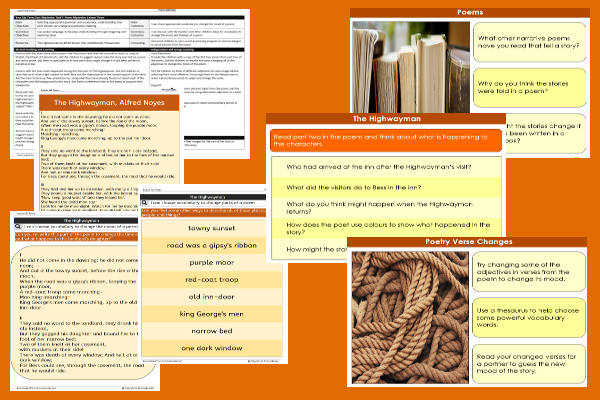Lesson Three – Poetry Verse Changes

This English teaching pack for Key Stage Two gets the children to select and model how to adapt and change the mood and feeling in a verse from a narrative poem about a mysterious character.
The class can practise using thesauruses to select powerful vocabulary words to use when editing a verse in a narrative poem to change its meaning.
Download this teaching pack including a lesson plan, classroom activities and an interactive presentation to teach the children to select and model how to adapt and change the mood and feeling in a verse from a narrative poem about a mysterious character
Activities in this teaching pack include a shared reading text to identify and describe how poets use figurative language to describe people, places and events in a narrative poem and a set of differentiated worksheets to select vocabulary to use when editing and adapting a verse from a poem to change its overall mood.
The interactive presentation gets the children to explore ow to adapt and change the mood in a verse from a poem about a mysterious character.
This lesson is part of an English scheme of work to get the children to explore and adapt vocabulary used in a narrative poem to describe characters and settings. There are teaching activities for shared learning, differentiated worksheets to support independent learning and interactive presentations to introduce concepts and key skills.
-

Animal Encyclopaedia
Design and produce a class encyclopaedia including entries and information about different classes of animals found in the world
-

Giant Fruit
Plan and write a narrative story based on a work of fiction by a significant author, build words by adding the suffix ly to roots and extend sentences using fronted adverbials
-

Times Tables Sums
Identify and recall facts in different times table to use when completing multiplication calculations indicating matching questions and products
-

Earth in Space
Describe the movement of the Earth, and other planets, relative to the Sun in the Solar System by using practical models and researching information
